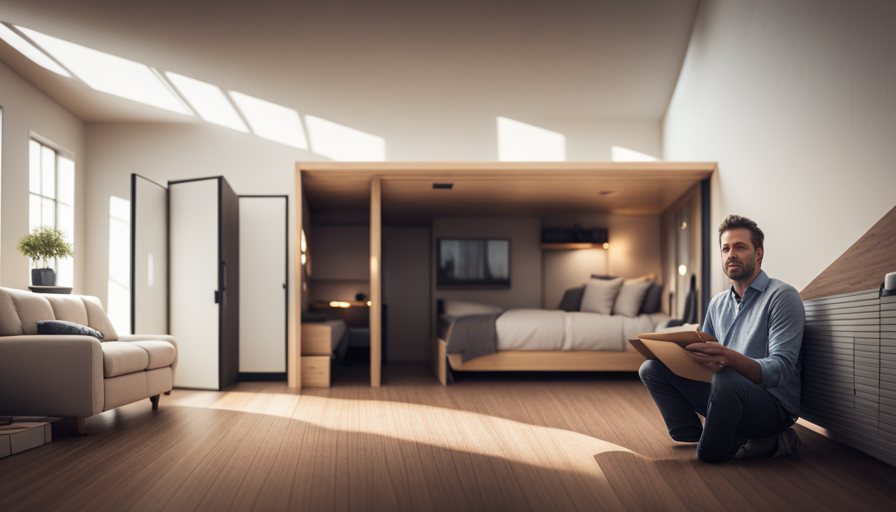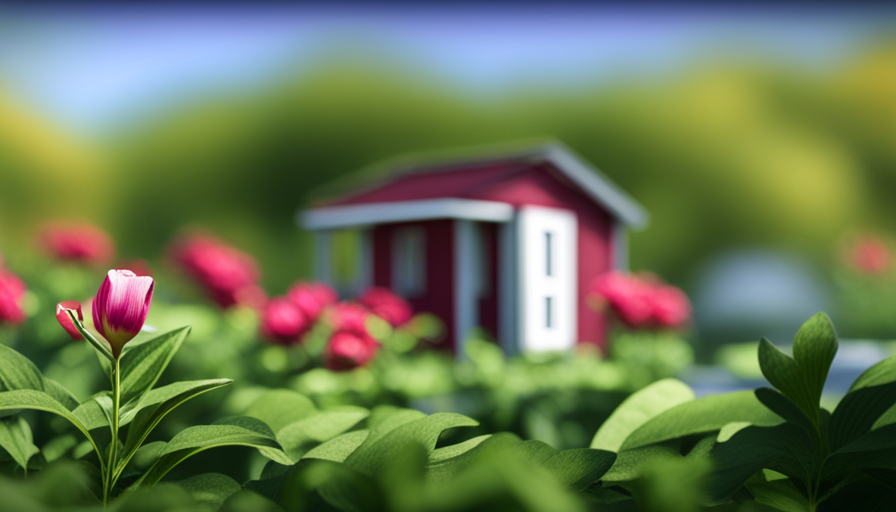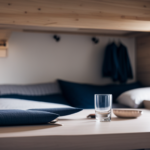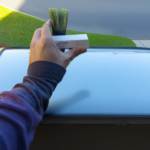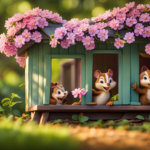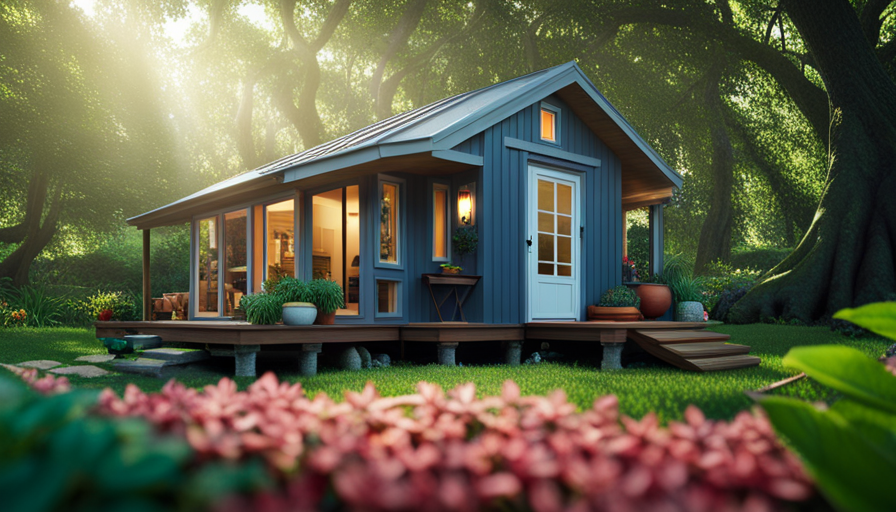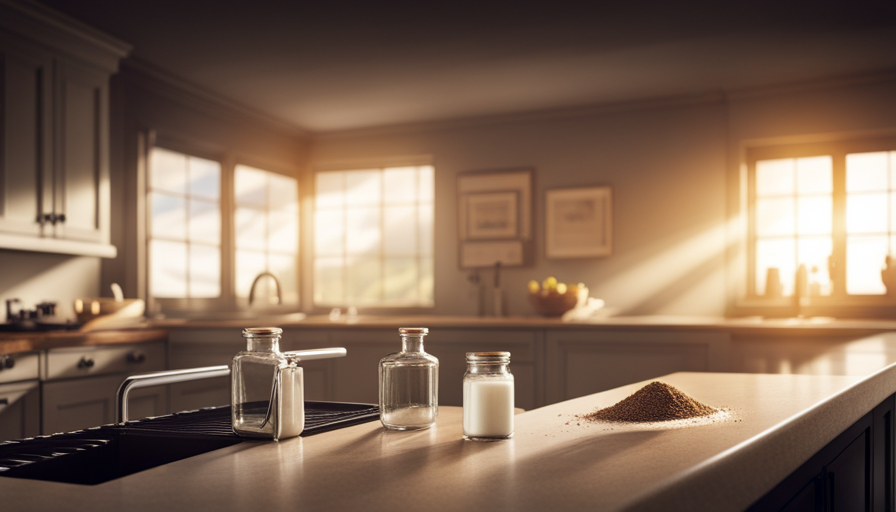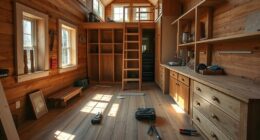In the world of small houses, where space is at a premium, every item must serve a purpose and each gift must be carefully chosen. Stepping into the cozy embrace of a tiny home, the beauty of minimalism enchants me, blending the ideas of simplicity and functionality.
The compactness of these homes symbolizes the desire for a simpler, more sustainable way of living.
In this article, I will guide you through a curated list of gifts for someone who lives in a tiny house. From multifunctional furniture that maximizes space to compact kitchen gadgets that make cooking a breeze, we will explore practical and thoughtful options.
Let’s not forget about eco-friendly home decor, storage solutions, and portable items that can be easily folded and transported.
And in a world increasingly focused on sustainability, we will also delve into energy-efficient electronics and DIY and upcycled gifts that align with the tiny house ethos.
Join me as we discover the perfect gifts for those who embrace the beauty of simplicity and live big in their tiny houses.
Key Takeaways
- Multifunctional furniture and compact kitchen gadgets are essential for maximizing space in a tiny house
- Eco-friendly home decor options made from reclaimed wood and recycled materials promote sustainability and style in a tiny house
- Storage solutions, such as hidden compartments and vertical storage, are crucial for organizing a tiny house and keeping it clutter-free
- Portable and foldable items, including camping gear and collapsible furniture, are game-changers for maximizing small living spaces in a tiny house
Multifunctional Furniture
You’ll love discovering the endless possibilities of multifunctional furniture for your tiny house! Transforming furniture is a game-changer when it comes to maximizing space. From sofa beds that convert into dining tables to coffee tables that double as storage compartments, these pieces are designed to serve multiple purposes without compromising style or comfort.
Not only do they save valuable floor space, but they also provide hidden storage solutions, making it easier to keep your tiny house organized and clutter-free. With cleverly designed compartments and compartments, you can store away your belongings and keep them out of sight, maintaining a clean and tidy living space.
Now, let’s move on to the next section about compact kitchen gadgets that will make cooking a breeze!
Compact Kitchen Gadgets
When it comes to living in a tiny house, every inch of space matters. That’s why I love using mini appliances for cooking and food preparation. They allow me to still enjoy cooking delicious meals without taking up too much space in my kitchen.
Additionally, space-saving utensils and cookware are a game-changer. They help me maximize the limited storage space I have and keep my kitchen organized and clutter-free.
Mini appliances for cooking and food preparation
Compact appliances can make cooking and food preparation in a tiny house a breeze. With mini cooking techniques and small kitchen organization, you can create delicious meals without sacrificing space. Here are some mini appliances that are perfect for tiny house living:
-
Mini oven: This compact appliance is great for baking, roasting, and toasting. It takes up minimal counter space and can still cook a variety of dishes.
-
Small blender: Blend smoothies, soups, and sauces with a compact blender. It’s perfect for single servings and easy to clean.
These mini appliances are essential for any tiny house kitchen. They save space while still providing the functionality of full-sized appliances.
In the next section, we’ll explore space-saving utensils and cookware that are perfect for small kitchens.
Space-saving utensils and cookware
Make your small kitchen more functional with space-saving utensils and cookware. When living in a tiny house, every square inch counts, so having dinnerware that’s designed to save space is essential. Look for space-saving dinnerware sets that stack neatly and can be easily stored when not in use.
Collapsible kitchen tools are another great option for maximizing your limited kitchen space. These tools can be folded or collapsed down to a compact size, making them easy to store in small drawers or cabinets. They’re also lightweight and portable, perfect for those who like to cook on the go.
With space-saving utensils and cookware, you can make the most of your tiny kitchen without sacrificing functionality.
Now, let’s transition into the next section about eco-friendly home decor.
Eco-Friendly Home Decor
Choosing eco-friendly home decor not only allows for a more sustainable lifestyle, but it can also add a touch of sophistication to any tiny house. When it comes to sustainable home furnishings, there are plenty of options to consider.
Opting for furniture made from reclaimed wood or recycled materials is a great way to reduce environmental impact. Additionally, choosing home decor items made from natural fibers like bamboo or organic cotton can further promote green living essentials. These eco-friendly choices not only look stylish but also contribute to a healthier living environment.
Now that we’ve discussed eco-friendly home decor, let’s move on to the next section about storage solutions, which are essential for maximizing space in a tiny house.
Storage Solutions
Looking for ways to maximize space in your cozy abode? Let’s explore some ingenious storage solutions that will make your tiny living quarters feel spacious and organized.
One practical idea is to incorporate hidden compartments in your furniture. This allows you to make use of every nook and cranny, keeping your belongings out of sight and creating a clean and clutter-free environment.
Another great option is vertical storage. Utilizing wall space with shelves and hanging organizers can free up valuable floor space, making your tiny house feel larger. These storage solutions are not only practical but also aesthetically pleasing, as they can be customized to match your home decor.
So, if you’re ready to make the most of your limited space, let’s move on to the next section and discover some portable and foldable items that will further enhance your tiny living experience.
Portable and Foldable Items
Ready for a game-changing solution to maximize your small living space? Enter portable and foldable items that’ll revolutionize your cozy abode. These space-saving gems are a must-have for anyone living in a tiny house.
Check out these essential items that are perfect for your compact home:
-
Portable Camping Gear: Whether it’s a foldable camping chair or a compact camping stove, having portable camping gear allows you to enjoy the great outdoors without taking up precious space in your tiny house.
-
Collapsible Furniture: From foldable tables to collapsible chairs, these innovative pieces of furniture can be easily stored away when not in use. They’re versatile and convenient, providing you with extra seating or dining options when needed.
-
Compact Storage Containers: Opt for collapsible storage containers that can be easily tucked away when empty. These containers are perfect for organizing your belongings and keeping clutter at bay.
With portable camping gear and collapsible furniture, you can make the most of your limited space.
Next, let’s explore the world of energy-efficient electronics.
Energy-Efficient Electronics
When it comes to energy-efficient electronics, there are two key points to consider: solar-powered gadgets and devices, and energy-saving appliances and lighting.
Solar-powered gadgets and devices are a great option for those looking to reduce their carbon footprint and save on energy costs.
Energy-saving appliances and lighting, on the other hand, can help conserve energy without sacrificing functionality or convenience.
By opting for these energy-efficient options, we can make a positive impact on the environment while still enjoying the benefits of modern electronics.
Solar-powered gadgets and devices
With solar-powered gadgets and devices, you’ll be amazed at how this gift can bring both convenience and eco-friendly joy to someone living in a tiny house. Not only are these gadgets powered by the sun, but they also allow for easy portability, making them perfect for a solar-powered garden or portable camping. Imagine being able to charge your phone or power a small fan without relying on traditional electricity sources. It’s truly liberating. To illustrate the versatility of solar power, consider the following table:
| Solar-powered Gadgets and Devices | Benefits |
|---|---|
| Solar-powered phone charger | Convenient and sustainable power on the go |
| Solar-powered lantern | Portable lighting without the need for batteries |
| Solar-powered speaker | Outdoor entertainment with sustainable energy |
These gadgets provide practical solutions for everyday needs while reducing the carbon footprint. And when it comes to energy-saving appliances and lighting, there are even more options to explore.
Energy-saving appliances and lighting
Imagine the convenience and sustainability of using energy-saving appliances and lighting in your tiny house. By investing in energy-saving appliances, you can reduce your carbon footprint while also saving money on your utility bills. Look for appliances with high energy efficiency ratings, such as refrigerators, stoves, and washers/dryers. These appliances are designed to use less energy without sacrificing performance.
Additionally, consider compact lighting options, such as LED light bulbs or solar-powered lights. LED bulbs use significantly less energy than traditional incandescent bulbs and have a longer lifespan. Solar-powered lights are a great option for outdoor lighting, as they harness the power of the sun to illuminate your tiny house’s surroundings.
With energy-saving appliances and compact lighting options, you can create a more sustainable and efficient living space in your tiny house. Transitioning into the subsequent section about ‘diy and upcycled gifts’, you can also explore creative and eco-friendly solutions for your tiny house.
DIY and Upcycled Gifts
When it comes to gift-giving, I find that handmade and personalized items hold a special charm. They show thoughtfulness and effort, making them truly unique.
Another great option is repurposed materials turned into practical gifts. By giving new life to old items, we not only reduce waste but also create something functional and meaningful.
Handmade and personalized items
Don’t worry, you definitely won’t find any space-consuming knick-knacks on this list of handmade and personalized gifts for someone with a tiny house. Personalized artwork and custom-made accessories are perfect for adding a personal touch to their small space. Here are a few ideas:
| Handmade and Personalized Gifts | Description |
|---|---|
| Customized wall art | A unique piece of artwork that reflects their personality and style. |
| Handcrafted storage solutions | Custom storage containers or shelves that maximize space while adding a decorative element. |
| Personalized doormat | A welcoming touch for their tiny home, with their name or a special message. |
| Customized throw pillows | Handmade pillows with their initials or a meaningful design. |
These thoughtful and practical gifts will show how much you care, while also being functional in their tiny house. Now let’s explore repurposed materials turned into practical gifts.
Repurposed materials turned into practical gifts
Consider transforming discarded materials into functional and meaningful items to offer a unique and eco-friendly touch to their compact living space.
Repurposed clothing can be transformed into cozy throw pillows, adding a pop of color and comfort to their small living area.
Upcycled jewelry, made from repurposed materials like buttons or keys, can be a stylish and one-of-a-kind accessory for them to wear.
Another practical gift idea is a repurposed wooden crate turned into a versatile storage solution, perfect for organizing their limited space.
By repurposing materials, you’re not only giving them a thoughtful gift, but you’re also promoting sustainability and creativity.
These repurposed items will not only serve a practical purpose but will also add a touch of personality and charm to their tiny home.
Frequently Asked Questions
What are some tips for maximizing storage space in a tiny house?
To maximize storage space in a tiny house, you need to get creative with your storage solutions. For example, instead of a traditional coffee table, I’ve opted for a storage ottoman that doubles as seating and has hidden compartments for blankets and magazines.
Additionally, it’s important to utilize vertical space. You can install floating shelves on the walls or hang a pegboard to hang pots, pans, and utensils. These creative storage solutions in small spaces can help you make the most of your limited square footage.
Are there any eco-friendly home decor options that are also affordable?
There are plenty of eco-friendly and budget-friendly home decor options available for a tiny house.
Sustainable materials like bamboo or reclaimed wood can be used for furniture and decor pieces.
Additionally, repurposing items like mason jars as vases or using natural fibers for textiles can add an eco-friendly touch.
When it comes to gift ideas, consider items like reusable storage containers, energy-efficient appliances, or indoor plants, which are not only sustainable but also practical for a tiny house.
What are some energy-saving features to look for in electronics for a tiny house?
When it comes to energy-saving features in electronics for a tiny house, the key is finding energy efficient appliances and utilizing smart home technology. These appliances are like superheroes, saving you tons of energy and money in the long run.
Look for energy star ratings, low power consumption, and features like programmable thermostats and smart plugs. With these gadgets, you’ll be able to control and monitor your energy usage, making your tiny house even more efficient and eco-friendly.
How can I incorporate DIY and upcycled gifts into a tiny house lifestyle?
To incorporate DIY and upcycled gifts into a tiny house lifestyle, I focus on two areas: DIY upcycled furniture and tiny house organization.
For furniture, I repurpose old items and give them new life with a fresh coat of paint or new upholstery.
As for organization, I create storage solutions using repurposed materials like mason jars for spices or old crates for bookshelves.
These DIY and upcycled gifts not only add charm to my tiny house but also minimize waste and save money.
Are there any portable and foldable items that are particularly useful for someone living in a tiny house?
Are you looking for portable and foldable items that can maximize space in your tiny house? Well, portable furniture and space-saving appliances are the way to go!
From collapsible tables and chairs to compact kitchen appliances, these items are not only convenient but also perfect for small living spaces.
With their versatility and functionality, they’ll help you make the most out of every inch in your tiny house.
Conclusion
In conclusion, finding gifts for someone who lives in a tiny house can be a thoughtful and practical gesture. By considering multifunctional furniture, compact kitchen gadgets, eco-friendly home decor, storage solutions, portable and foldable items, energy-efficient electronics, and DIY and upcycled gifts, you can provide them with items that maximize their limited space and align with their sustainable lifestyle.
Remember, it’s not just about the physical gift, but also about the intention behind it, symbolizing the importance of simplicity, efficiency, and mindful living.
Hi, I’m Emma. I’m the Editor in Chief of Tiny House 43, a blog all about tiny houses. While tree houses are often associated with childhood, they can be the perfect adult retreat. They offer a cozy space to relax and unwind, surrounded by nature. And since they’re typically built on stilts or raised platforms, they offer stunning views that traditional homes simply can’t match. If you’re looking for a unique and romantic getaway, a tree house tiny house might just be the perfect option.
